Layton Blvd. and National Ave.
Talk about car-centric. And what a huge parking lot. Yes, it can be improved.
The intersection of S. Layton Boulevard (aka 27th St.) and W. National Avenue is a significant meeting point between two major roadways and several major bus lines on the near South Side. At the same time, this intersection also attempts to fulfill some neighborhood needs with a drugstore, gas station, a bank and more–all within walking distance of a residential area. The trouble is, the intersection is having a hard time doing all this at once, mostly due to its deplorable, car-centric design. There may be incremental changes that could move the intersection in a better direction, but it really needs a more dramatic overhaul to reach its true potential.
Layton and National is dominated by an old strip mall spanning an entire block on the northwestern corner. The mall is clunky and gray, with faded green awnings covering every shop, making them look identically awful and strangely suburban for this decidedly urban neighborhood. Populating that strip mall are the usual suspects: a check cashing joint, a Subway, a Payless shoes, and so on. Unfortunately, the prime corner store, directly in view of the intersection is vacant, and by the looks of the Google Maps photos going back in time, it has been empty on and off for several years. (It was originally a Walgreens, which moved across the street years ago.) Like all strip malls, this one has a large parking lot out front, which means all the stores are set back a substantial distance from the street, requiring large signage in order to try to capture business from passersby. It’s clearly built for cars.
It’s a busy place, suffering from a poor, car-centric design. This intersection is just a few blocks south of the Mitchell Park Domes so traffic in the area is consistent, in addition to the pass-through traffic coming down National Ave. And given the many bus lines that stop at this corner, it also experiences a lot of transit-based pedestrian traffic.
What Works
Still, Layton and National does have some things going for it. First, it’s in a fairly stable neighborhood. Many of the businesses in the mall have been there for years, and the houses nearby are historic and mostly well-preserved.
Some small attempts have been made to make the area more attractive, including a few historic lampposts, a “Welcome to Historic Layton Boulevard” sign (in front of the Walgreens) and widened sidewalks. Other attempts are even more superficial and less successful. For instance, several garbage bins on wheels have been placed near the corner bus stops, in an attempt to prevent trash from accumulating on the sidewalks. Yet the bins themselves look trashy due to their temporary nature. A handful of bike racks are also dispersed around the intersection, but unfortunately, most are rusting and appear unreliable and unused.
Another failed attempt comes from Walgreens, which placed a small beauty supply store on the corner of its lot in an attempt at better urban form (perhaps mandated by the government). But the beauty store has the same bland façade as the Walgreens and –disconnected from other businesses — does little to change the suburban feeling of the intersection. Finally, I spotted a white bench on the northwestern corner of the intersection near a bus stop, that looked as though it had been placed there by caring neighbors or perhaps the strip mall owner. However, this too was dusty and dirty, and I didn’t see anyone using it.
A few positive features appear to have been created by the businesses in the area. Walgreens placed some benches on its property, against the sidewalk, as did the BMO Harris. The latter also has a small area of greenery on its eastern side. That’s about it.
What Doesn’t
Unfortunately, the aforementioned attempts to improve the area in many cases made it worse, as noted. Nor ard incremental improvements likely to have much impact, given the intersection’s car-centric design that does little to invite or accommodate pedestrians. This might not be such a problem if this intersection was in a rural area that no one could get to on foot. But in reality, Layton and National sees pedestrians pass through by the hundreds every day, between the people getting on and off buses and those walking to and from the neighborhood.
There’s a word for this type of street, coined by Chuck Marohn of Strong Towns. That word is “stroad,” meaning a street-road hybrid wherein cars are encouraged to move at high speeds based on wide/multiple lanes as if on a county road, yet are also operating in a higher density, urban street-like area. Marohn calls them the “futon of transportation alternatives” because they fail at being good roads or good streets. At Layton Blvd and National Ave, this is evidenced by the prioritization of car speed and amenities (parking lots and gas stations) over pedestrian freedom or interests. As a result, the intersection is unsafe, and considerable space remains underutilized, with a low tax base, and only marginally successful businesses, while cars whiz by. Between the trash, the dangerously speeding cars and the massive parking lots, why would any pedestrians ever want to hang around here?
How Can We Improve it?
In an interview, architecture critic Tom Bamberger offered an interesting comparison between this strip mall and the one on Brady Street and Cambridge Avenue (near Farwell). The latter works surprisingly well for being a strip mall in an urban area. Its parking lot is small and the mall curves around that lot to create a more inviting space. Indeed, on a typical Friday night or Sunday afternoon, the Brady Street mini-mall is alive with activity, from college kids getting chicken wings to seniors picking up prescriptions–and many of those customers are on foot. Conversely, the mall on Layton Blvd, is far too big for its space, covering an entire city block, two football fields. Its parking lot is also much too wide and set back too far from the sidewalk. It is car-scale, not human scale. A pedestrian would feel positively unsafe walking across the mall’s parking lot. Unfortunately, it would take a dramatic renovation (and probably demolition) of the mall to get it anywhere close to the strip mall on Brady and Cambridge. Perhaps a better effort would be proposing something altogether new for the intersection. Bamberger suggested it might be a great opportunity for a developer. It’s certainly prime real estate in a fairly thriving neighborhood, and it’s largely wasted right now. A mixed use development like an apartment building with stores beneath would serve the neighborhood much better.
Some smaller-scale ideas for improvement might involve decreasing the wasted space in the mall parking lot by inviting food trucks, farmers markets, parklets or smaller buildings to fill parts of that area. Street parking along National Ave would also slow the traffic somewhat. I would also propose removing the fences that separate lanes on these streets and replacing them with flowers or trees. The fences send one message: stay out. They take away from the neighborhood by further discouraging pedestrians from spending time there, whereas greenery would add a little beauty to the space, if nothing else.
Overall, this intersection largely fails as a neighborhood space and instead, prioritizes car speed above all else. Layton and National needs a design shift to make it safer and more inviting for pedestrians, which would in turn increase its economic productivity, and might even encourage those drivers passing through to stick around.
S. Layton Boulevard and W. National Avenue
About Intersection
As part of new Milwaukeean Rachel Quednau‘s exploration of Milwaukee, she will be exploring how the city can take better advantage of its many significant intersections.
Intersection
-
6 Changes Needed on Commerce & North
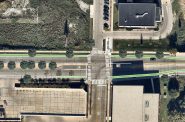 Aug 25th, 2017 by John O’Neill
Aug 25th, 2017 by John O’Neill
-
Farwell and Brady Need Changes
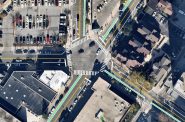 Mar 30th, 2017 by John O’Neill
Mar 30th, 2017 by John O’Neill
-
16th And Greenfield Is Chaotic
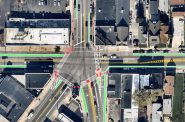 Feb 10th, 2017 by John O’Neill
Feb 10th, 2017 by John O’Neill



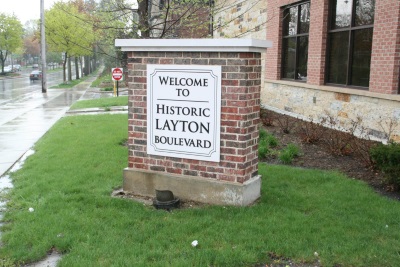
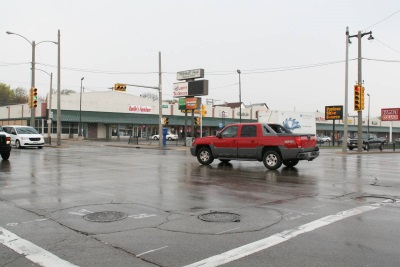
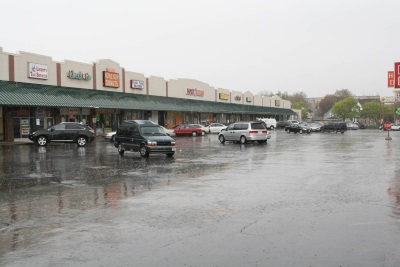
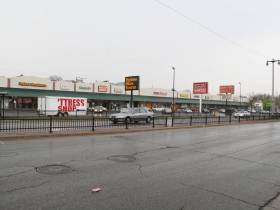
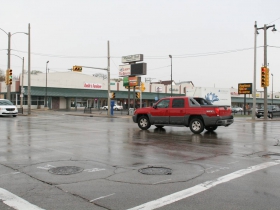
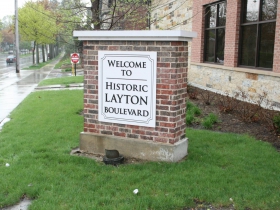
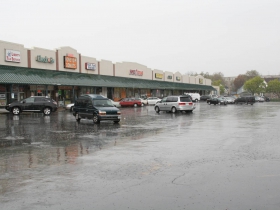
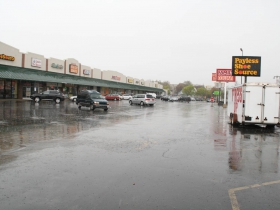




















Great article. One other thing improving this intersection might do is provide a better link between Mitchell Park and the neighborhood. National represents such a dramatic break in pedestrian friendliness I would actually be curious to see how many community members feel comfortable walking to the park as opposed to driving, even though it is really only a few blocks away.
I ride my bike almost everyday on National from 23th to the VA, then cut down to Beloit heading west. The 27th street intersection doesn’t seem especially dangerous to bike/ped traffic, but it sure is ugly. The same could be said about nearly every major intersection in town. If aesthetics are the main concern, it probably will never be improved since most people really just don’t care
What is really at a lack here is change; the intersection is virtually the same as 40 years ago, if not longer. Outside of Walgreens switching corners and BMO being the current financial institution at the corner, it remains the same. Same huge parking lot. Same amount of residents that drive or walk to the store. Same, same, same. Even the missing link to Mitchell Park, it has always been this way. Unfortunately there are a lot of neighborhoods like this.
Ah, Milwaukee, City of Lost Opportunities — this intersection for instance. I never understood exactly what Walgreen’s was thinking when they made their diagonal move. The need for a drive-thru? Additional parking? Those could have been met at the old location, in fact it would have been great if the strip-mall owners, who had everything to lose with the move, offered to remodel for Walgreen’s needs and what better time to remodel the mall? The only reason I can think of (maybe a compelling one from a corporate viewpoint) was to take that store out of competition from the Walgreens on both 16th & Wisconsin and 35th & Wisconsin.
See, the strip mall opened not too long after the city’s first shopping center, Southgate, opened in 1951, and was intended to sap southbound traffic to the new attraction from across the 27th St. Viaduct. With the subsequent changes in retail that Walgreens location ended up sapping traffic from right between the 16th & 35th St stores to the north. But that would be a lousy, soul-less corporate reason to rip down one of the neighborhood’s most enduring institutions, the old National Liquor Bar. That had character. That was the real crossroads of almost every class.
As for that strip mall, its other anchor was a Tate’s Shop-Rite supermarket (now replaced by a thriving Goodwill store) that lasted until a Pick N Save opened at 19th & National. Some of us who shopped there referred to the Mall as “The Village of the Damned”, both because of the hellish parking lot (no rules) and the fact that almost every time one shopped at Tate’s either the police or Tate’s security guards were busy nabbing a shoplifter.
Just as that mall tried to sap Southgate’s traffic, and Southgate decimated Mitchell St., so Southgate was decimated 20 years later by Southridge and on it goes. In the case of Walgreens, for years they made it a habit to locate right in view of local pharmacists, only to have CVS duplicate Walgreens predatory move by locating directly across from Walgreens whenever possible. In this vicious underbelly of retail resides an opportunity. Imagine a new retail/residential development where the worn-out mall is, with stores fronting Layton Blvd., apartments staggered above for two or three stories, using set-backs to create decks, parking behind (being careful to carve out for the residential hold- outs on 28th St. behind the current mall), accessed off National, 28th St & W. Pierce St and, yes, maybe a CVS anchoring the southeast corner. Just a thought.
Great article, but missing some context and history. Sent you email to your blog site? Hope that we can talk more! best, JZ